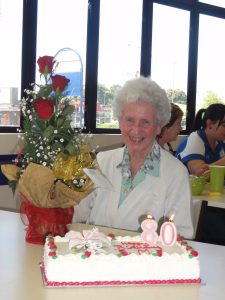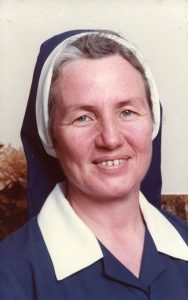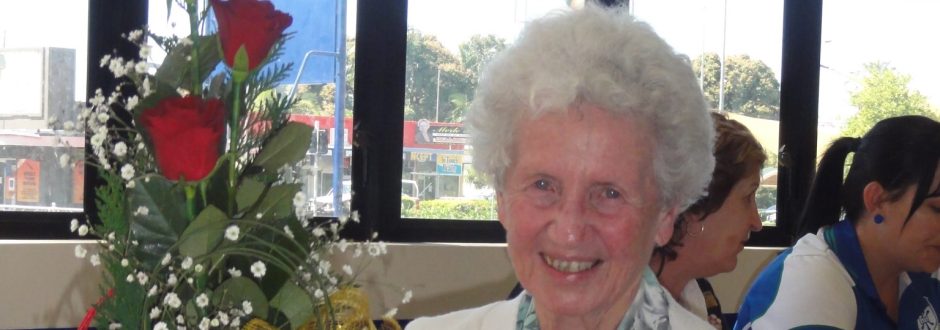When the card arrived in February 2017 marked “Return to Sender”, the first thing that entered my mind was that my friend, Margaret, to whom the Christmas card had been sent, had moved residence, writes Mary Rowan Highfield.
Immediately, I phoned the aged-care facility to make inquiries. The person who answered the phone could not have known what impact her brief, matter-of-fact reply had on me: “Sister Margaret passed away on 29 November last year.”
My head reeled from the news, my heart sank, desolation and dejection filled my soul. My dear friend, Margaret, had passed away in a city a thousand miles distant from where I was living, and I was unaware.
Collecting my thoughts while struggling to come to terms with my grief, I knelt down to give thanks for her life and to reflect on the legacy of this extraordinary woman: a Sister, whose life on earth had ended, but whose influence on all those she encountered from different walks of life was powerful, sublime and enduring.

Good Samaritan Sister Margaret Lyons. Image: St Margaret Mary’s College, Townsville.
Entering the Sisters of the Good Samaritan at an early age, Margaret hailed from a property in the Gulf Country of Australia at Normanton in far North West Queensland. Her parents sent Margaret and her two sisters to St Mary’s boarding school in Charters Towers where she completed her secondary schooling.
After obtaining a diploma in teaching, Margaret spent a few years as a teacher before deciding that she wanted to enter the Sisters of the Good Samaritan of the Order of St Benedict, the Sisters who had taught her at boarding school.
Not long after being professed, in 1953, Margaret went to teach in a school at Sasebo, within Nagasaki Prefecture, located on the island of Kyushu in Japan. She was posted to Seiwa, a girls’ secondary school recently established by the Good Sams. At just 23 years of age, Margaret was living in a country that only eight years previously had fought a bitter war against Australia and its allies.
Her ministry was with a broken people, not only humiliated by defeat, but who had suffered the worst possible devastation and destruction known to humankind with the dropping of the atomic bombs on Nagasaki and Hiroshima in August 1945. Equipped only with her knowledge, her courage and her faith, Margaret began her mission in a foreign land among the Japanese people.
During her time at Sasebo, Margaret made many friends, not only with her students and fellow Sisters, but also with the Japanese communities with whom she came into contact. She became highly fluent in the spoken and written aspects of the Japanese language and developed a deep understanding of the Japanese people, culture and traditions.
Many of her past students and people within the community held Margaret in the highest regard, not only for her teaching ability, but also for her absolute humanity and diligence to her task. She worked to heal the hidden wounds of a people who were not of her faith, her culture or her traditions. One past Japanese student, on learning about Margaret’s death, via Facebook, commented: “Because of Sister Margaret, I love Australia.”
During her time in Japan, Margaret enjoyed just one or two visits from her father, who was given special permission to visit his daughter. This was during an era when, after a religious person had been fully professed, ties with their families and with the outside world were severely curtailed. In the course of time, however, Margaret enjoyed visits to Tokyo, Nara, Kyoto, Hiroshima and Nagasaki.
After almost 30 years, she was posted back to Australia, to her home. The parting proved bittersweet for Margaret, for she had come to love the Japanese people and had adopted many of their ways, including their humility, their patience, their dignity, and their unwavering spirit of resilience. She departed Japan with wonderful memories of the respect, gratefulness and beauty of the Japanese people.

Sister Margaret Lyons SGS c1980. Image: Sisters of the Good Samaritan.
On returning to Australia at age 53, Margaret spent time in Sydney at the Congregation’s headquarters before being posted to a community of Good Samaritan Sisters at St Margaret Mary’s College, Townsville, a girls’ secondary school in tropical Queensland. Age had never daunted Margaret and, once again, with faith, courage, determination and humour, she set out to provide education, support and healing to students and communities of the North.
One of her first accomplishments was to obtain her driver’s licence. Soon, Margaret gained the reputation within the school and wider community, not only of being an outstanding bilingual teacher but also of introducing her Australian students to Japanese traditions, such as origami, tea ceremonies and flower-arranging. She was an instigator of an exchange program that saw Japanese students visit her Australian school once a year and vice versa. Margaret fostered inclusivity and acceptance.
Margaret’s pastoral expertise became evident, and she would often visit the families of students, including families of Indigenous students, for whom she displayed a special regard. True to form, her dedicated, caring approach to all ensured that she was loved, not only by students studying the Japanese language, but by the entire school and wider community.
Her sense of humour, which she had in abundance, was dry, but one of my fondest memories took place after joining the teaching staff of her school. Soon after my arrival, I was allocated a desk in the staffroom near Margaret and on receiving my first fortnightly pay, I exclaimed, excitedly, that I was financial once again. Her tongue-in-cheek rejoinder was, “So, you’re richer than you’ve ever dreamed!”
Though Margaret was a Sister, and though it was obvious to her friends and acquaintances that she had a spirit of goodness and holiness that the rest of us, most assuredly, did not possess, she never made anyone feel that they had to be constrained in any way in their dealings with her. She had the enormous gift of being able to accept everyone as they were, where they were, and in any situation in which they found themselves. Many people approached her with overwhelming problems, but Margaret generated hope.
She remained as sharp as a pin until the time, at around age 78, when her cognitive powers began to decline. Though residing in an aged-care facility, Margaret remained aware of what was going on in the world: its problems, its angst, its trauma, its poverty of body and spirit; but, still, she saw its enormous beauty. It was yet another legacy of the lessons she’d learned from her exposure to the Japanese culture with its emphasis on beauty, especially beauty in nature, but it was also, without doubt, related to her strong faith.
In her final years, Margaret played the violin with a musical ensemble in her aged care home even though dementia, in its cruel way, had sapped her wonderful bright intellect.
Good Samaritan Sister Margaret Lyons, the girl from the Queensland bush, was truly a person of immense goodness, kindness, gentleness, courage, and dignity. She showed me and countless others that God’s love encompasses not just the upright, powerful and privileged of the world, but also the poor, heartbroken and ostracised. This woman of wisdom, by her life of inclusivity, acceptance and compassion, epitomised the essence of the Good Samaritan.
